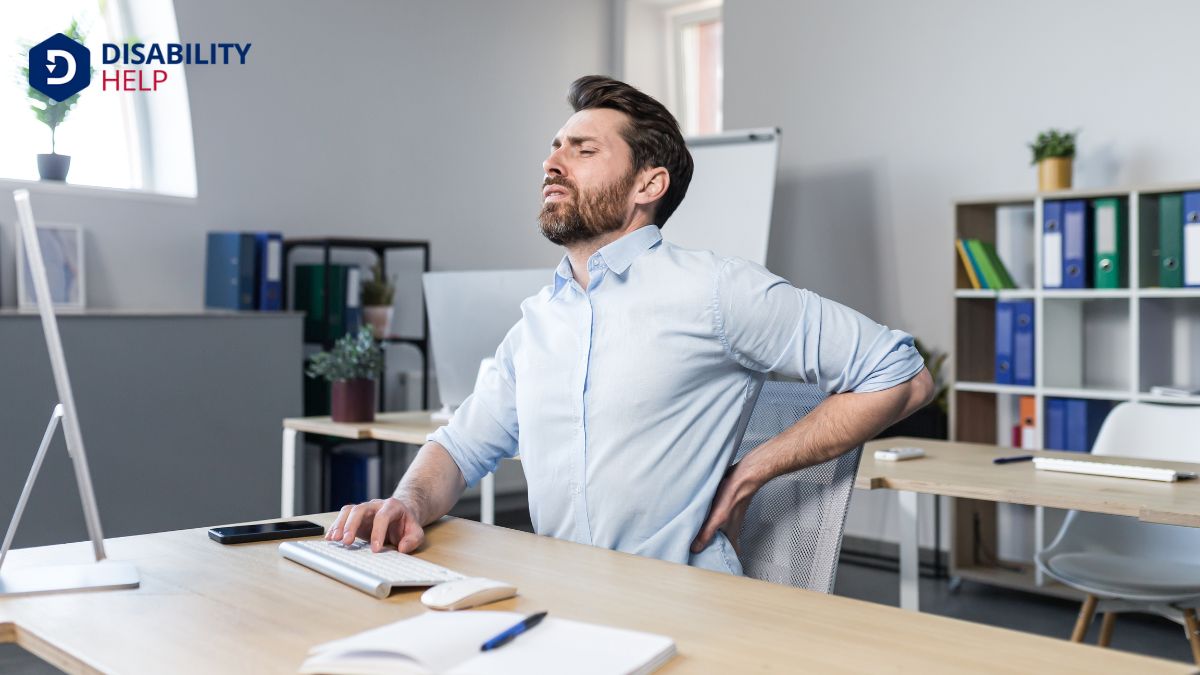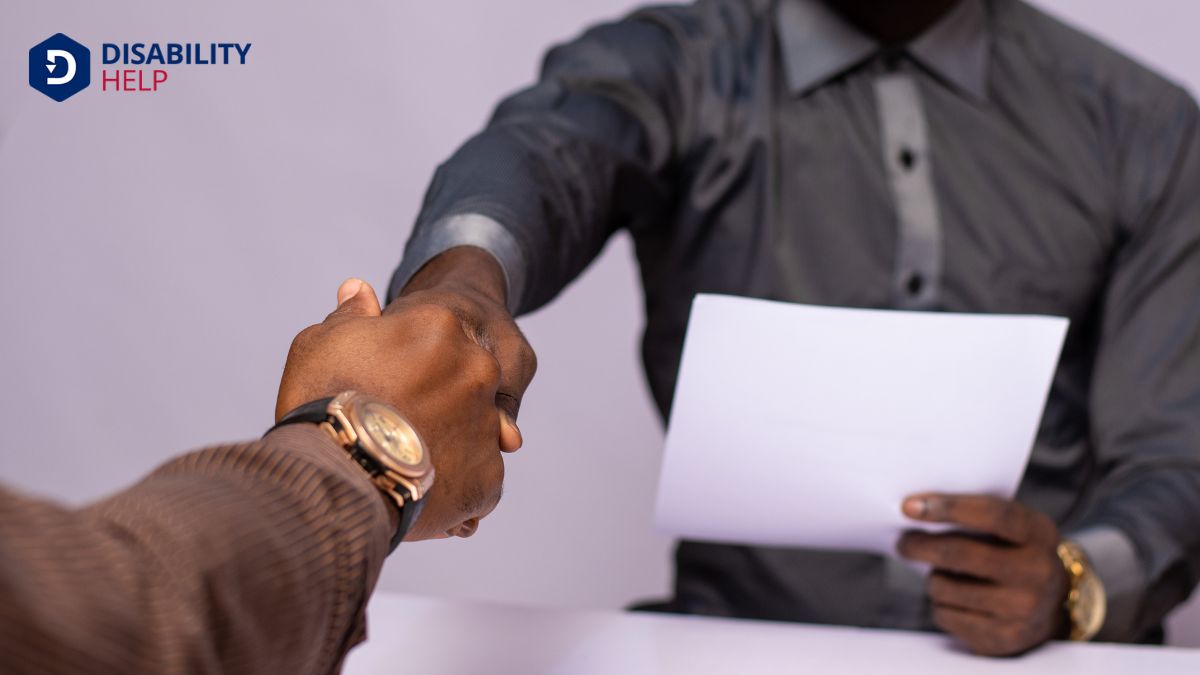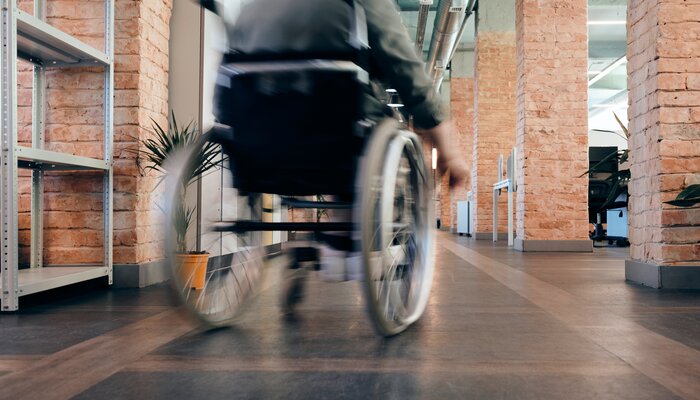When we consider the complexities of workers' compensation for back injuries, it's evident that grasping the subtleties can make a significant difference in the outcomes for those affected. Whether we're discussing spinal cord injuries, herniated discs, or muscular strains, the impact on one's ability to work is often profound. We need to explore not only the types of back injuries and common causes but also the compensation benefits and the claim process. What steps should we take to make sure we're maximizing our benefits and maneuvering potential legal challenges? Let's unpack these critical aspects together.
Key Takeaways
- Workers' comp covers medical expenses, lost wages, and disability benefitsFinancial assistance provided to individuals who are unable to work due to a disability, such as Soc... for back injuries.
- Reporting the injury promptly and seeking immediate medical treatment is crucial for a successful claim.
- Proper documentation and accurate medical records support the work-related nature of the injury.
- Legal representationThe way people with disabilities are depicted in media, culture, and politics, often influencing pub... can enhance the chances of a successful claim and fair settlement.
- Following all treatment recommendations and keeping detailed medical records maximize compensation benefits.
Types of Back Injuries

Back injuries in the workplace encompass a variety of conditions that can greatly impact our daily lives and job performance. Common types of back injuries include spinal cord injuries, herniated discs, whiplash, and muscular strains. These injuries often result from manual labor tasks involving heavy lifting, repetitive movements, and poor ergonomics. When we sustain a work-related injuryAn injury that occurs in the course of employment, potentially leading to temporary or permanent dis..., it can lead to debilitating pain and reduced job performance, often causing significant work-loss days.
Workers' compensation is designed to help us in such situations. Workers comp benefits cover medical expenses and offer Workers Comp Pay for the lost wages resulting from a back injury. However, securing these benefits requires us to prove the work-relatedness of our back pain. This means we need evidence such as medical records, witness statements, and timely reporting to our employer.
When filing Workers comp claims for a Workers Comp Back Injury, having thorough documentation and clear evidence is important. It helps make sure that our medical expenses and lost wages are covered.
Common Causes
Understanding the types of back injuries is only part of the equation; we also need to recognize the common causes behind them. Workers face numerous risks that can lead to back injury claims.
Heavy lifting is one of the primary culprits, especially in jobs that require manual labor tasks. Repetitive movements, like those found in assembly line work, can also strain the back over time. Poor ergonomics in the workplace, such as improper chair or desk setup, contribute significantly to back problems.
Slips and falls are another major cause of workplace injuries, often leading to herniated discs or muscular strains. Overexertion, which can happen when workers push their physical limits, is a leading cause of back injuries. It's not just the physical tasks; even seemingly minor actions can add up to notable pain.
Understanding these common causes helps us take preventive measures and create safer work environments. Recognizing the risks associated with manual labor tasks and addressing poor ergonomics can reduce the number of back injury claims. By being aware of these factors, we can work together to minimize workplace injuries and keep everyone safe and healthy.
Compensation Benefits
When we talk about compensation benefits for back injuries, it's important to understand the different types available, such as Temporary Total Disability and Permanent Partial Disability.
Calculating lost wages is another critical aspect, as well as ensuring workers receive fair financial support during recovery.
Types of Compensation Benefits
Exploring the types of compensation benefits available for back injuries is crucial for anyone seeking sufficient support after a workplace incident. Understanding how workers comp programs address these injuries can greatly impact our financial stability during recovery. Back injuries often lead to a range of compensation options, primarily focused on medical expenses, lost wages, and disability benefits.
Types of compensation benefits include Temporary Partial Disability (TPD) and Permanent Total Disability (PTD). TPD covers situations where we can still work but at a reduced capacity, while PTD applies if the back injury completely prevents us from returning to work. These benefits ensure that the severity of the back injury and its impact on our ability to work are adequately addressed.
Workers' compensation benefits are designed to cover medical expenses and lost wages, providing support while we recuperate. The severity of the back injury and the required treatment determine the specific benefits we receive.
Calculating Lost Wages
Shifting our focus from the types of compensation benefits, let's discuss how lost wages are calculated in workers' comp cases. Calculating lost wages starts with determining the injured worker's average weekly pay. This average forms the basis for both temporary and permanent disability benefits. Temporary disability benefits cover lost wages during the recovery period, while permanent disability benefits address long-term wage loss if the injury results in lasting impairmentA loss or abnormality of a body structure or function, whether physical, mental, or sensory, often a....
The amount and duration of these benefits depend on the severity of the back injury and whether the worker can return to work. For instance, a severe injury might extend the period of temporary benefits or even necessitate permanent disability compensation.
In cases where injured workers can't return to their previous job due to their back injury, vocational benefits may help them shift to new employment.
It's crucial to guarantee fair compensation, and consulting with a workers' comp attorney can make a significant difference. They can help navigate the complexities of workers' comp laws and guarantee that you receive the compensation you're entitled to. Understanding these elements helps us secure the financial stability needed during recovery.
Claim Process

To start the workers' compensation claim process for a back injury, we need to promptly report the injury to our employer and follow company procedures for documentation.
Seeking immediate medical treatment is essential, and ensuring all necessary paperwork is accurately completed and filed helps keep the process smooth.
If we face challenges, it's wise to seek legal assistance to navigate the claim effectively.
Reporting the Injury
Reporting a back injury promptly is necessary to initiate the workers' compensation claim process. When we report the injury to our employer right after it happens, we set the stage for a smooth claims process. It's important to follow our company's procedures for documenting the injury and accurately filling out the necessary paperwork. This guarantees that our workers' comp claim will be taken seriously.
To navigate this process effectively and protect our worker's rights, let's remember a few key steps:
- Document Thoroughly: Confirm every detail of the back injury and subsequent medical treatment is recorded. Proper documentation is vital for a successful workers' compensation claim.
- Seek Medical Treatment: Prompt medical treatment not only aids in recovery but also provides necessary medical records that support our claim.
- Consult an Attorney: An attorney specializing in workers' compensation claims can help us navigate the process and advocate for our rights.
Understanding these steps helps us feel more confident in handling a workers comp claim. By acting quickly and efficiently, we protect our health and our rights, guaranteeing we get the support we need during recovery.
Filing the Claim
Filing a workers' compensation claim for a back injury can seem overwhelming, but understanding the process makes it manageable. First, we need to report the injury to our employer promptly and seek immediate medical treatment. This step is vital as delays can compromise our claim.
Next, we must follow our employer's procedures for documenting the injury. This typically involves filling out specific claim forms. When completing these forms, it's crucial to provide detailed information about our back injury—how it happened, the extent of the pain, and how it affects our ability to work. Accurate and thorough documentation is pivotal to a successful claim.
If we encounter challenges or denials during the claim process, consulting a workers' comp attorney can be beneficial. An attorney can guide us through the complexities and make sure we're taking all necessary steps.
Understanding the worker's comp claim process and making sure we meet all requirements improves our chances of a favorable outcome. By promptly reporting the injury, seeking medical treatment, and following our employer's procedures, we lay the groundwork for a successful claim. Staying proactive and informed is our best strategy in navigating this process.
Seeking Medical Treatment
Our journey to a successful workers' compensation claim for a back injury starts with seeking immediate medical treatment. When we experience a workplace injury, prompt attention is crucial. Visiting healthcare providers right away not only addresses our pain but also documents the injury, which is essential for our workers' comp claim.
Here's why immediate medical treatment is crucial:
- Establishes a Clear Connection: Prompt medical attention helps establish a clear link between the back injury and the workplace, strengthening our claim.
- Essential Medical Records: Medical records from the initial treatment are critical in proving the work-related nature of our injury when filing for workers' compensation.
- Demonstrates Commitment to Recovery: Following the prescribed treatment planA detailed plan developed by healthcare professionals to treat a specific health condition, outlinin... from healthcare providers shows our dedication to the recovery process, positively impacting our claim's success.
After seeking medical treatment, it's wise to consult a workers' comp attorney. They can guide us through the claim process and ensure we receive the proper medical care.
Legal Challenges
Exploring the legal challenges of workers' compensation claims for back injuries can be particularly overwhelming due to the inherent complexities involved. Disputes often arise over the seriousness of the injury and the difficulty in diagnosing back injuries.
Since back pain is highly subjective, it can lead to disagreements over the benefits and compensation owed.
In maneuvering through this maze, seeking legal advice becomes essential. A workers comp lawyer can provide valuable guidance, ensuring our comprehension of our rights and the intricacies of our claim. They assist us in gathering and documenting the necessary medical evidence to support the seriousness of our injury, safeguarding our chances of receiving full benefits.
One significant challenge is the subjective nature of back pain, which can make it challenging to prove the extent of our injury. This is where professional legal assistance becomes indispensable.
Attorneys advocate for us, helping secure a fair settlement by negotiating on our behalf and addressing disputes that may arise during the process. By having legal representation, we enhance our chances of successfully maneuvering the worker's comp system and obtaining the medical and financial support we deserve for our work-related back injury.
Proving Work-Relatedness
Proving that back injuries are work-related is essential for securing workers' compensation benefits. To qualify, we must demonstrate that the injury occurred during employment. Insurers often challenge work-relatedness by pointing to pre-existing conditions or non-work-related causes. New back injuries can further complicate things by aggravating pre-existing conditions, making it vital to prove work-relatedness.
To build a strong case, we need to inform medical providers about the work-related nature of our injury. Accurate and detailed documentation from doctors is key to substantiating work-relatedness. Gathering evidence is another essential step.
Here's what we should focus on:
- Doctors' Notes: Ensure our medical providers explicitly state in their notes that the injury is work-related.
- Witness Statements: Collect statements from colleagues who witnessed the incident or can attest to our work conditions.
- Employment History: Provide a record of our tasks and any previous back injury claims to show consistency in our story.
Hiring an Attorney

Once we've gathered the necessary evidence to prove our back injury is work-related, it's wise to evaluate hiring an attorney to strengthen our case. A workers comp attorney can significantly enhance our chances of a successful claim, especially since many claims get denied without legal representation. By having an attorney on our side, we can navigate the complex appeal process if our back injury claim is denied, ensuring we've the proper documentation and support needed.
One of the major benefits of hiring a workers comp attorney is their ability to secure a higher compensation amount. Their expertise in the field means they know how to maximize the benefits we receive. Plus, attorneys typically work on a contingency fee basis, usually around 15%, which means we only pay if we win our case.
Legal representation not only helps in improving the success of our claim but also protects our rights throughout the process. An attorney can guide us through every step, ensuring our claim is solid and well-documented. By taking this proactive step, we can feel confident that our back injury claim is in the best possible hands, ultimately leading to a more favorable outcome.
Maximizing Benefits
Maximizing our workers' compensation benefits for back injuries involves a proactive approach and strict adherence to medical advice. To get the most out of our back injury claims, we need to be diligent in several key areas.
First, attending all medical appointments and following treatment recommendations is essential. This compliance with treatment not only helps in expediting recovery but also guarantees we comprehend the requirements for benefits.
Here are three essential steps for maximizing benefits:
- Accurate Documentation: Keep detailed records of all medical visits, treatments, and communications with healthcare providers. This documentation supports our claims and helps prove the extent of our back injuries covered under workers' comp.
- Communication with Physicians: Regularly update and consult with our doctors about our condition and recovery progress. Effective communication can lead to better treatment plans and faster recovery times, which can maximize our benefits.
- Seek Legal Counsel: Understanding workers' comp processes can be complex. Consulting with legal professionals can ensure we grasp our rights and receive the full benefits we're entitled to.
Frequently Asked Questions
What types of back injuries are typically covered by workers' compensation?
- Workers' compensation generally covers back injuries that are a direct result of workplace activities or accidents. This includes strains, sprains, herniated discs, and injuries resulting from repetitive motions, heavy lifting, or accidents such as falls.
How do I prove that my back injury is work-related?
- Proving a work-related back injury typically involves providing medical documentation and evidence that the injury occurred while performing work duties. Medical records should explicitly link the injury to your workplace activities or incident. Witness statements and an accurate, timely incident report can also support your claim.
What should I do immediately after experiencing a back injury at work?
- Seek medical attention immediately to get a proper diagnosis and begin appropriate treatment. Inform your employer about the injury as soon as possible by providing a detailed account of how, when, and where the injury occurred. Document everything, including any witness statements and medical reports, as these will be crucial for your workers' compensation claim.
What benefits can I receive for a workers' compensation claim for a back injury?
- Benefits typically include medical treatment costs, compensation for lost wages if you are unable to work during recovery, and potentially rehabilitationThe process of helping individuals with disabilities achieve and maintain their optimal physical, se... expenses. If the injury leads to permanent disability, you may also be eligible for additional benefits based on the severity and lasting impact of the injury.
Can my employer dispute my claim for a back injury?
- Yes, employers or their insurance carriers can dispute workers' compensation claims. Disputes can arise over the nature of the injury, whether it is truly work-related, or the amount of benefits due. If your claim is disputed, you may need to provide additional evidence, and it might be necessary to go through a formal appeals process.
Conclusion
To sum up, maneuvering workers' compensation for back injuries can be intricate, but we're here to support each other. By comprehending the types of injuries, common causes, and available benefits, we can better advocate for ourselves. Remember, promptly reporting injuries, seeking medical attention, and consulting an attorney are key steps. Let's guarantee we maximize our benefits and secure the compensation we deserve for a safer, healthier future. We're in this together.






